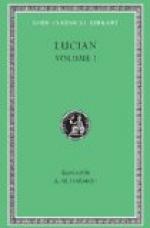CHAPTER XI.
HOW CUSTER LIVED AND DIED.
“Remember Custer”—An Eye Witness of the Massacre—Custer, Cody and Alexis—A Ride over the Scenes of the Unequal Conflict—Major Reno’s Marked Failure—How “Sitting Bull” Ran Away and Lived to Fight Another Day—Why a Medicine Man did not Summon Rain.
“Remember Custer” was the watchword and battle-cry of the small army of American soldiers who early in the present decade advanced against hostile Indians in the Northwest, who after indulging for weeks in a series of fantastic dances and superstitious rites, were finally called to time by the Government and punished for their disregard of treaty rights and reasonable orders. Every American child should know who Custer was and why the troopers called upon each other to remember him on the occasion referred to. It is less than twenty years since he died. His name should be remembered by civilians as well as soldiers for almost as many centuries to come.
There are some men who seem to defy and even court death. Custer was one of these. He was so recklessly brave that he often caused anxiety to his superior officers. Time and again he led a handful of men apparently into the jaws of death and brought them out safely, after having practically annihilated the foe. As the pitcher which is carried safely to the well ninety-nine times sometimes gets broken at the hundredth attempt, so was it with General Custer. In June, 1876, his detachment was outnumbered twenty to one at a little ford near Crazy Horse Creek, in Dakota, and his entire command was wiped out. An adopted son of “Sitting Bull,” the famous Indian, states that he saw Custer die, adding that he twice witnessed the hero lying on his back fighting his foes. The third time he saw him a blanket was drawn over the hero, who was apparently dead.
On another page is given an admirable illustration of the camp and ford, as well as of the monument erected in Custer’s memory, with typical Indian camp scene. This picture is from photographs taken specially for Mr. Charles S. Fee, General Passenger Agent of the Northern Pacific Railroad, whose tracks run close by this scene of such sad history.
A volume could be devoted to the life of Custer, the adventures he encountered, and the risks he ran in the course of his eventful and useful career. His works and his memoirs bristle with information concerning the actual truths of border life and Indian warfare, bereft of romance and exaggeration. Like almost all Indian fighters, Custer entertained a supreme contempt for the red man generally, although his naturally kind disposition led him to give credit to individual red men for bravery, gratitude, and other characteristics generally believed to be inconsistent with their character and nationality.




